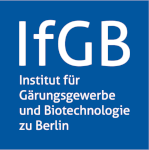BioProScale 2022 - Scientific Poster
- P01: Phosphate assimilation in co-culture of Acinetobacter tjernbergiae and Pseudomonas stutzeri
Simon Täuber et al, Technische Universität Berlin - P02: Utilizing straw-derived hemicellulosic hydrolysates for feed manufacturing with Chlorella vulgaris – a new waste to value approach
Ricarda Kriechbaum et al, TU Vienna - P03: PHA bioplastic with tunable monomer content by flexible substrate mixtures
Lara Santolin, Isabel Thiele et al, Technische Universität Berlin - P04: Novel methanol-free expression system PDH: a potential alternative to classical P. pastoris promoters for recombinant protein production
Núria Bernat-Camps et al, Universitat Autònoma de Barcelona - P05: Influence of oxygen levels on a genome reduced Pseudomonas putida strain
Jesper W. Jensen et al, Technical University of Denmark - P06: withdrawn
- P07: Parallel scale-down tool to accelerate fermenterphile selection
Jonas Bafna-Rührer et al, Technical University of Denmark - P08: Controlling Aspergillus niger morphology in a rocking motion bioreactor
Tolue Kheirkhah et al, Technische Universität Berlin - P09: Progress in characterisation of liquid flow in oscillatory rocked disposable bioreactors: experimental procedures and empirical models for mixing time evaluation
Mateusz Bartczak et al, Warsaw University of Technology - P10: Dynamically adjusting extracellular environmental conditions leads to robust oscillations in gene expression: toward a generalizable cell population control strategy
Lucas Henrion et al University of Liège, Gembloux, Belgium - P11: Small scale mechanical cell disruption: A workflow to screen for ideal disruption conditions for recombinantly produced proteins in E. coli
Stefan Kittler et al, TU Vienna - P12: Bioprocess development for the heterologous production of a hyperthermostable 5'-methylthioadenosine phosphorylase in Escherichia coli
Julia Schollmeyer et al, Technische Universität Berlin - P13: Thermostable adenosine 5’-monophosphate phosphorylase from Thermococcus kodakarensis forms catalytically active inclusion bodies
Sarah Kamel et al, Technische Universität Berlin - P14: XenoGlue - Scale up of a recombinant mussel protein analog as photoactivatable bioglue
Christian Schipp et al, Technische Universität Berlin - P15: Model-based rational design for aerobic industrial fermentation: P.chrysogenum and S.cerevisiae as model organisms
Wenjun Tang et al, Delft University of Technology, The Netherlands - P16: Across scales: An integrated robotic cultivation platform for accelerated bioprocess development
Lucas Kaspersetz et al, Technische Universität Berlin - P17: Analyzing growth kinetics of cyanobacterial photo-biocatalysts in microfluidic droplets
Paul Böhme et al, Helmholtz-Zentrum für Umweltforschung - P18: Beyond the average – quantifying the specific reactivity of single cells
Martin Schirmer et al, Helmholtz Centre for Environmental Research - P19: Electroporation of PUFA-producing Dinoflagellate
Stephan Hartmann et al, Technische Universität Berlin - P20: A semi-automated luciferase-based substrate screening assay for nucleoside kinases
Katja F. Winkler et al, Technische Universität Berlin - P21: Automated cell line characterization in shake flasks for multiple organisms
Rüdiger W. Maschke et al,Zurich University of Applied Sciences, Switzerland - P22: Focal molography a new real-time PAT solution for bioprocess
Volker Gatterdam, lino Biotech AG - P23: PAT for the automation of a recombinant antimicrobial peptide production process
Lisa Michel et al, University of Applied Sciences Hamburg - P24: Kuhner TOM for off-gas analysis in shake flasks
Juan Camillo Porras Correa, Kuhner Shaker GmbH - P25: Application of a novel high resolution volumetric gas measurement system for the determination of the biochemical methane potential
Marius Conrady et al, Humboldt Universität zu Berlin, Germany - P26: Flexibilization of two-phase digestion through monitoring of dissolved hydrogen
Eike Janesch et al, Technische Universität Berlin - P27: Raman spectroscopy as an analytic tool in upstream bio-processing
Christoph Lange et al, Technische Universität Berlin - P28: Monitoring of fermentation processes by gas chromatography-ion mobility spectrometry (GC-IMS) and machine learning
Joscha Christmann et al, Mannheim University of Applied Sciences, Germany - P29: Xcom, a multi-objective function for the metabolic modeling of microbial consortia
Xavier Marbehan et al, Laboratoire Réactions et Génie des Procédés, Vandoeuvre Cedex, France - P30: Model based real-time estimation of maximum substrate uptake capacity in microbial fermentation
Don Fabian Müller et al, TU Wien, Austria - P31: Modeling enzymatic glucose release to facilitate continuous feeding in miniaturized fermentations
Annina Kemmer et al, Technische Universität Berlin - P32: Modeling Saccharomyces cerevisiae central carbon metabolism at steady state and under glucose perturbations
David Lao-Martil et al, Eindhoven University of Technology, The Netherlands - P33: Reconstruction of a genome-scale model of Cupriavidus necator for PHA production
Martha Ascencio-Galvan et al, Universidad del Valle, Colombia - P34: Computer simulation of the glycosylation of proteins in the Golgi apparatus
Christian Jetschni, Peter Götz, Berliner Hochschule für Technik, Germany - P35: withdrawn
- P36: Creating educational software inspired by digital twins
Carina L. Gargalo et al, Technical University of Denmark

